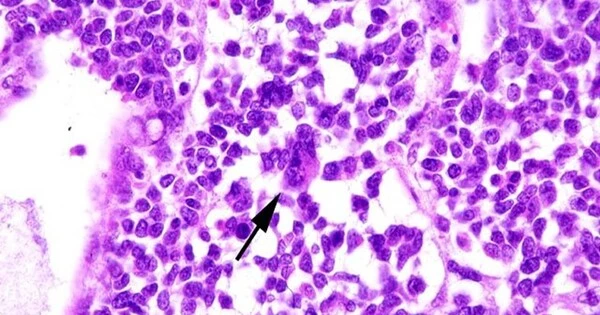Anaplasia is a loss of differentiation in cells that causes them to become more primitive or undifferentiated. It is a condition in which cells lose their morphological characteristics of mature cells as well as their orientation with respect to each other and endothelial cells. This phenomenon is frequently associated with cancer and is distinguished by abnormal cellular features such as changes in size, shape, and nuclear characteristics.
A group of morphological changes in a cell (nuclear pleomorphism, altered nuclear-cytoplasmic ratio, presence of nucleoli, high proliferation index) that indicate a possible malignant transformation is also referred to as a tumor. In pathology, the term is frequently used to describe the degree of differentiation or dedifferentiation observed in cancer cells.
Most, but not all, malignant neoplasms exhibit such structural differentiation loss. The term can also refer to an increased capacity for multiplication. Lack of differentiation is thought to be a defining feature of aggressive cancers (for example, it distinguishes leiomyosarcomas from leiomyomas).
Anaplasia literally means “backward formation.” It denotes normal cell dedifferentiation, or the loss of structural and functional differentiation. However, it is now known that at least some cancers arise from stem cells in tissues; in these tumors, undifferentiated tumors are caused by failure of differentiation rather than dedifferentiation of specialized cells.
Key features of anaplastic cells include:
- Cellular Pleomorphism: Anaplastic cells are frequently variable in size and shape. Anaplastic cells, unlike normal cells, which are well-organized and uniform in appearance.
- Nuclear Changes: Anaplastic cell nuclei are characterized by abnormalities such as increased size, irregular shape, and prominent nucleoli. The chromatin pattern may become coarser and more irregular.
- Loss of Specialized Functions: Anaplastic cells frequently lose the specialized functions and structures that were characteristic of their origin tissue. Because of this loss of differentiation, determining the tissue type from which the cancer originated is difficult.
Importance
Anaplasia is a key concept in cancer pathology, and it is frequently graded on a scale to assess the degree of differentiation or dedifferentiation of tumor cells. The grading system assists pathologists and oncologists in understanding the aggressiveness of the cancer and its potential for growth and spread. Tumors with a higher degree of anaplasia are generally considered more aggressive and may have a worse prognosis.
Pathologists assess anaplasia using a variety of criteria, which vary depending on the type of cancer being evaluated. Grading systems are commonly used in the evaluation of tumors in organs such as the breast, prostate, and central nervous system. The information derived from grading contributes to the overall staging of cancer, helping clinicians determine the most appropriate treatment approach for a given patient.
















